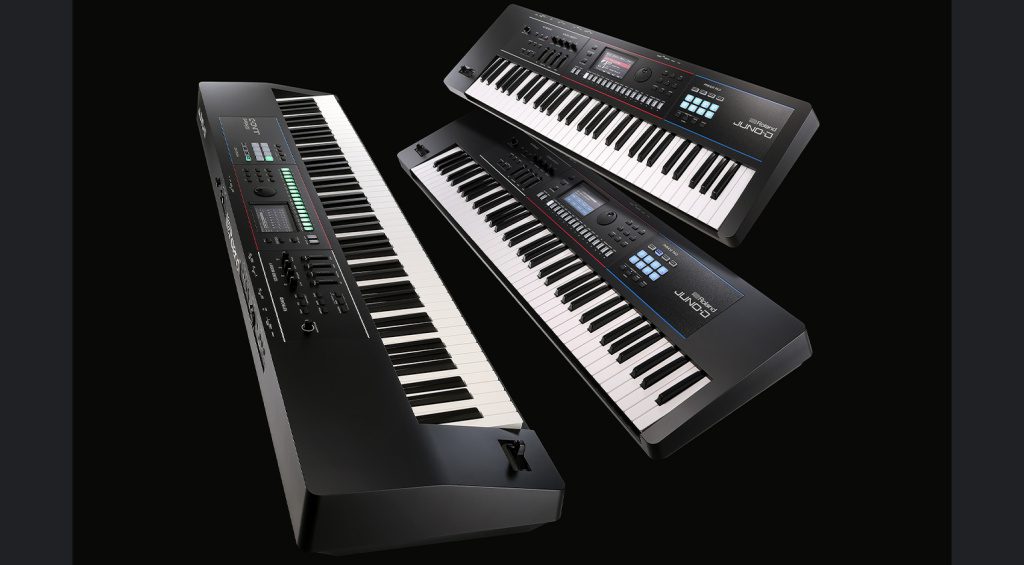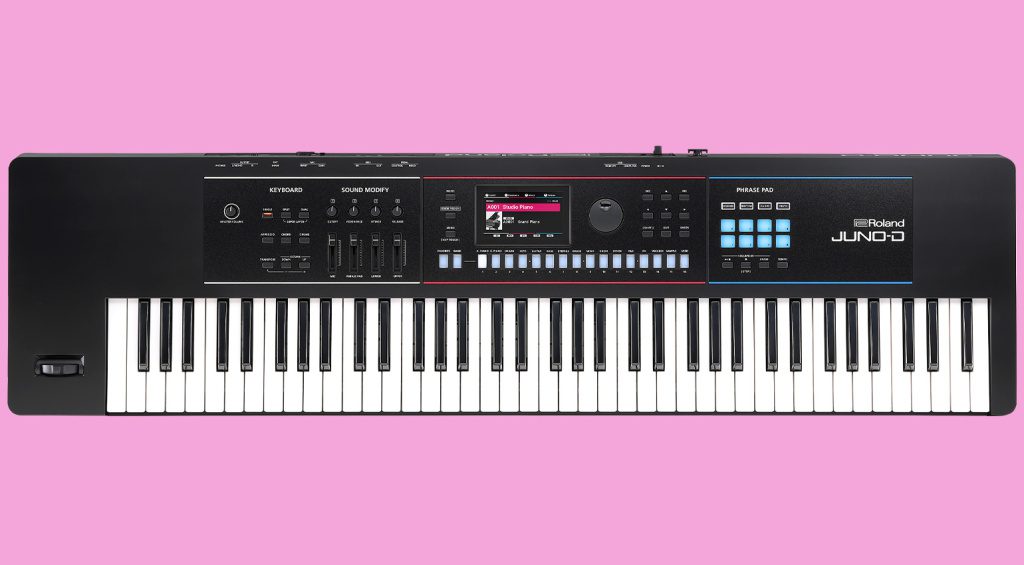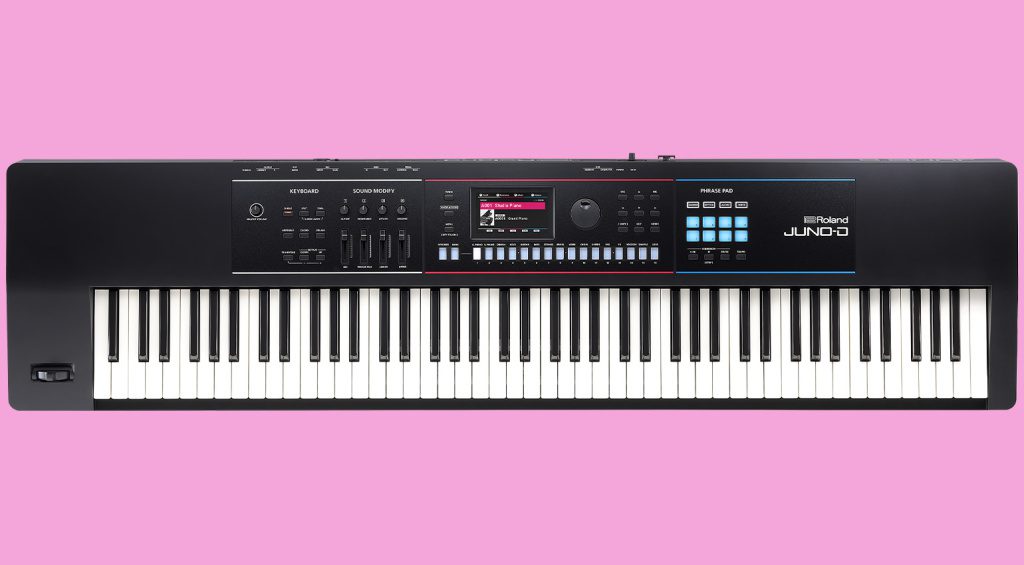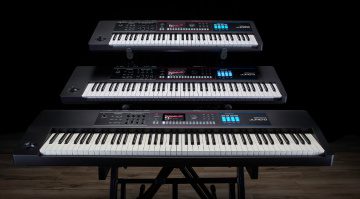The new Roland Juno-D series is aimed squarely at gigging performers, with a ZEN-Core sound engine, USB-C power, keybeds from the Fantom-0 synths and built-in vocal effects. Does it deserve the Juno name?
Roland Juno-D 6/7/8
Roland debuted the Juno name in 1982 with the Juno-6. Although many associate it with analog, the original idea was as an affordable poly alternative to the Jupiter series. Over the years, Roland has expanded the Juno lineup, from the 106 and Alpha Junos in the 1980s to the modern digital Juno era, which began with the Juno-D in 2005. Now Roland is resurrecting the Juno-D name with three new stage-focused instruments, the Juno-D6, Juno-D7 and Juno-D8.

All of the Juno-D models feature keybeds from the Fantom-0 series. The 61-key Juno-D6 and 76-key Juno-D7 sport synth-action keyboards and the Juno-D8 features an Ivory Feel piano-style keybed with 88 weighted-action keys and hammer action.
Other than the keyboards, all three Juno-Ds offer identical sound engines and features.
ZEN-Core Inside
Like many of the company’s modern synths, the new Juno-D series features a ZEN-Core sound engine. The 3800 sounds have been tuned specifically to sound good on stage, with a variety of presets including acoustic and electric pianos, vintage and modern synths, organs, orchestral instruments, world sounds, drums and more divided into 16 categories. It’s also possible to import WAV files to use as samples.
The synths offer sound adjustment parameters such as cutoff and resonance plus controls for dual layering, splits and a Super Layer function, which sounds much like a unison effect.
Being ZEN-Core based, you can also expand the sounds through the Roland Cloud via Sound Packs and Wave Expansions.
Sequencer and Arpeggiator
With a nod to its big Fantom brothers, the Juno-D contains an eight-track sequencer with TR-Rec step input, step recording and real-time recording options with a maximum of 64 steps. Additionally, there are eight phrase pads to trigger and mute patterns.
The instruments also feature an arpeggiator, chord memory and rhythm tracks.
Effects in Effect
As you’d expect, the Juno-D synths each feature the company’s usual complement of effects, with 93 types including chorus, reverb, compression, distortion and EQ.
Interestingly, the Juno-D instruments also come with a microphone port, allowing users to use the Juno-D as a kind of vocal production device. The vocal effect section includes vocoder, as you might expect, plus Autotune-like pitch effects and vocal reverbs. Buskers, take note!
Connectivity and Power
The Roland Juno-D series instruments include a variety of connectivity aimed at both the stage and studio. There’s a class-compliant audio/MIDI USB-C interface, balanced stereo outs and a headphone jack. You can run audio through it from a smartphone or other device via USB-C for practicing plus there’s a USB memory port for flash drive updates.

You can even power the synths through the USB-C port via a mobile battery. Maybe bring a backup just in case.
Price and Availability
The original Roland Juno-D series and its digital follow-ups have been incredibly popular with gigging musicians. With its feature set and price point, this new series looks set to replicate that popularity.
The Roland Juno-D keyboards are available now through Thomann*.
Prices are as follows:
- Roland Juno-D6: €949
- Roland Juno-D7: €1049
- Roland Juno-D8: €1299











